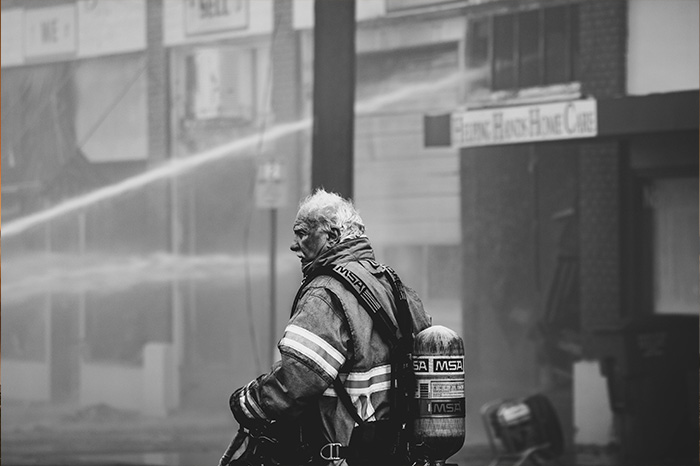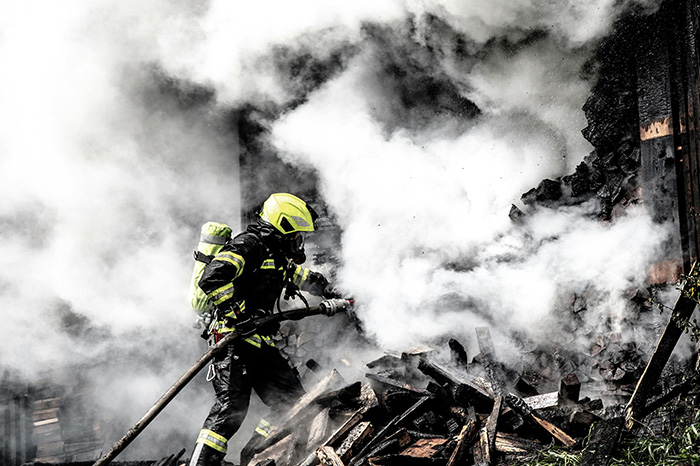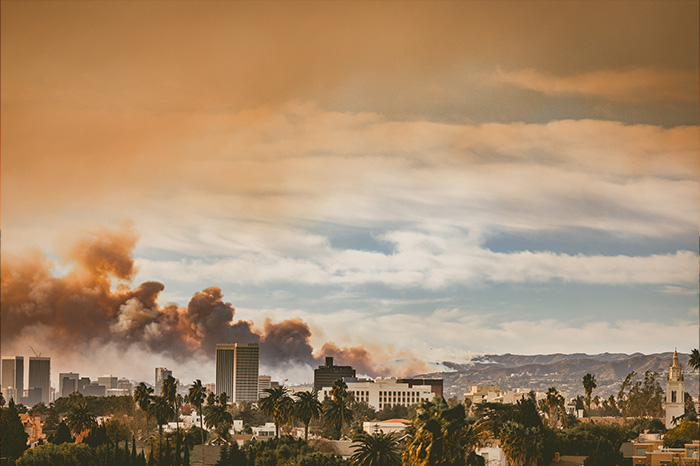
Evacuation information and emergency alerts
- City of Santa Clarita’s emergency updates: The latest updates on Hughes Fire evacuation orders, road closures, activated shelters, social media channels to follow, and other information related to the Hughes Fire. You can also sign up to receive text message alerts.
- Alert LA County: An opt-in mass notification program used during disasters. Receive emergency alerts by text, email and/or phone call. Accessibility features are available for people with disabilities.
- L.A. County’s Emergency web page: Dedicated to the Hughes, Palisades, Eaton and other wildfires in the area, with real-time updates on evacuation orders and warnings, open evacuation shelters (for humans and animals), family assistance centers, water alerts, road closures and more. Find a map to check your evacuation status.
- Genasys Protect evacuation maps: Input your address to determine the evacuation status of your location. A mobile app is also available.
- Cal Fire’s Incidents hub: Operated by California’s Department of Forestry and Fire Protection dedicated to active wildfires, including the Hughes Fire, Palisades Fire, Eaton Fire and others. Each site lists zones under evacuation orders or warnings, status updates on fires, contact details or social media channels of emergency partners, damage assessments, evacuation shelters and more.
- ReadyLACounty’s Emergency Notifications: Mass notification communication tool used by L.A. County during a disaster. Provides links to local emergency notification systems specific to certain neighborhoods.
- 211 L.A.’s Greater Los Angeles Wildfire hub: Status updates, evacuation orders, shelters, transportation updates, utilities updates and more. Alternatively, dial 211 for assistance.
The information and material contained in linked articles is of a general nature and is intended for educational purposes only.
Resources for Wildfire Survivors
The information and material contained in linked articles is of a general nature and is intended for educational purposes only.

Initial Actions to be taken
Summary of guidance for reporting claims and managing expenses
- Report Claims Promptly: Contact your insurance carrier immediately to report claims, as they are processed on a first-come, first-served basis. Clarify coverage details, including wildfire deductibles, ALE, auto, and contents coverage.
- Document Accommodations and Expenses: Provide your carrier with detailed information about your current accommodations and any needs for alternative housing or ALE. Keep meticulous records of all expenses to document ALE losses.
- Inventory Personal Contents: Begin cataloging all personal items, such as clothing, furniture, and appliances, as this is a critical and challenging part of the claims process.
- Secure Housing Quickly: Due to high competition for housing, secure accommodations as soon as possible, even before claim approval.
- Keep Receipts: Retain receipts for all living expenses, including food, travel, clothing, hotels, and pet accommodations.
- Beware of Predatory Vendors: Avoid unreliable contractors or public adjusters. Rely on your insurance carrier for recommendations and vetting of contractors.
- Initiate mail forwarding:
- Any post office will help facilitate this and have letters and packages sent to any address
- This can also be done online for a $1.10 fee here
These steps are initial actions; further guidance is available as needed. Prompt claim reporting and thorough expense tracking are crucial.
Immediate relief needed, what can you expect?
If a state of emergency is declared in California and your home is completely destroyed, your insurance company is required to immediately pay you a minimum of 1/3 of the estimated value of your personal belonging (known as content) & a minimum of 4 months’ worth of rent for the local area in which you live
-
- Payments are required whether an adjuster has completed their inspection or not
- Click here for Top Ten Tips for Wildfire Claimants (summary below)
- Review Insurance Policy: Obtain your homeowner’s insurance policy and ask for explanations on coverage for rebuilding, personal belongings, and
living expenses, including Extended Replacement Cost and Building Code Upgrade.
- Additional Living Expenses (ALE): Understand your ALE limits and manage expenses for living away from home. ALE coverage may last up to 36 months if delays are beyond your control.
- Track ALE Expenses: Document expenses from temporary living arrangements, noting that ALE does not cover regular costs like your mortgage.
- Claim Diary: Keep a detailed record of conversations with your insurer and adjuster, especially regarding exclusions or limitations.
- Rebuilding Estimates: Get at least one contractor estimate to gauge rebuilding costs compared to your coverage. Insurance estimates may not reflect local conditions or demand surge.
- Seek Assistance: Call the Department of Insurance Hotline for help or complaints.
- Rebuild at Another Location: You can rebuild elsewhere and still receive full coverage benefits, including Building Code and Extended Replacement Cost benefits, and choose your contractor.
- Careful Decision-Making: Assess your situation thoroughly before hiring contractors or adjusters, considering your financial and personal circumstances.
- Assess Coverage Adequacy: Do not assume inadequate coverage; evaluate whether your policy’s limits, including extended coverage, are sufficient for rebuilding.
- Public Adjuster or Attorney: Consider hiring a public adjuster or attorney only if necessary. Understand their fees and services before signing a contract.
Making the insurance process as smooth as possible
- Start a recovery/claim diary and take detailed notes on your conversations along with numbers called
- Keep paperwork organized and take photos of receipts or use an phone application to document receipts electronically
- At your home, take photos before any cleanup or debris removal occurs
- Take inventory of all your damaged and destroyed property
- Every interaction with your adjuster should be supported by a follow-up email
What to do after insurance adjuster inspects home?
- If you receive an immediate settlement offer, get a second opinion
- Do not accept a “final payment” check
- You are able to hire an independent public adjuster with your claim
- Avoid out of state adjusters who may not know consumer protection laws in California
- Department of Justice recommends trying to settle your claim directly with your insurance company rather than hiring a public adjuster or lawyer
Recovery of Important Documents
- Visit local assistance centers in your area where volunteers can help get new copies of passports, drivers licenses, birth certificates, death certificates, and marriage certificates that may have been lost
- They may also be able to assist in getting your property taxes re-evaluated
If you lost your business in the fire
- Contact insurance provider to file a claim
- Collect business records as you will need to file claim, including documents that prove the value of damaged inventory, equipment or structures
- Many insurance plans include business interruption coverage
- Designed to compensate for lost income and cover ongoing costs
- Make a list of business expenses you’ll continue to incur after a wildfire, such as payroll
- You’ll need proof of the income your business was generating prior to the damage, so gather financial documents including tax returns, business contracts, financial statements and budgets.
- You will also need to provide the cost of conducting business from a temporary location, if applicable.
Conclusion
- Do not rush into anything
- Register with Federal Emergency Management Agency (FEMA) if the event becomes a
federally declared disaster
The information and material contained in linked articles is of a general nature and is intended for educational purposes only.



